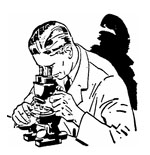
Can a Scientist Pray?
LETTER FROM ENGLAND
The term “apologetics” classically designated one of the three main branches of systematic theology, the others being dogmatics and ethics. Today, however, there is not a theological seminary in the world (to my knowledge) that gives the same stress to apologetics as it does to dogmatics or ethics — unless one thinks of certain liberal schools of theology where the three fields are equalized by placing no significant stress on any of them. One is hard put to think of Christian writers of the caliber of C.S. Lewis who are currently defending the faith with both an ability to communicate to a non-specialized audience and the respect of their peers for the quality of their scholarship. The dearth of serious Christian apologists is particularly unfortunate in our era of increasing secularism: Where are the apologists when we need them most?
A ray of hope is provided by the work of John Polkinghorne. Formerly a professor of mathematical physics at Cambridge University, he took Anglican orders and spent a number of years as priest of a little, out-of-the-way parish. During that time he wrote several highly significant books dealing with the interrelations of science and Christian faith. Recently he was appointed President of Queens’ College, Cambridge — attesting to the respect in which he is held by his academic peers. His books include The Way the World Is (1983), One World (1986), Science and Creation (1988), Science and Providence (1989), and Reason and Reality (1991) — all published by S.P.C.K. in England — and he regularly fulfills prestigious lecture commitments in the British Isles. Since Polkinghorne is not yet well known on the other side of the Atlantic, it is worthwhile to give a taste of his approach — if only to whet one’s appetite for more.
On October 20, 1992, Polkinghorne addressed the Royal Society of Arts on the subject “Can a Scientist Pray?” As a fellow of the Society, I attended. Particularly illuminating was the reaction of the audience, which, drawn together by purely secular interest in arts, science, and technology, hung on his every word — an atypical response for a Society whose historical luminaries are not theologians but secular saints like Benjamin Franklin.
Polkinghorne began by blasting the mechanical universe of 18th-century deism, observing that its “clockmaker” image of God and its deterministic model of the world are hopelessly outmoded. Both quantum physics and Einsteinian relativity contradict the mechanistic universe. Today’s field of “chaotic dynamics” has shown that “almost all of the everyday physical world is so exquisitely sensitive that the smallest disturbance produces quite uncontrollable and unpredictable consequences.” The result, of course, is an open rather than a closed (Newtonian) universe — and an open universe is one which has room for answered prayer.
You May Also Enjoy
What do most of us know of Romania? Practically nothing. The best known “Romanian” (he…
Briskly selling in France now is a collection of 137 testimonies (three of them cartoons)…
Science and Christian faith agree that the universe has overall structure but an open future, and prayer is a prime factor in fine-tuning that future.

